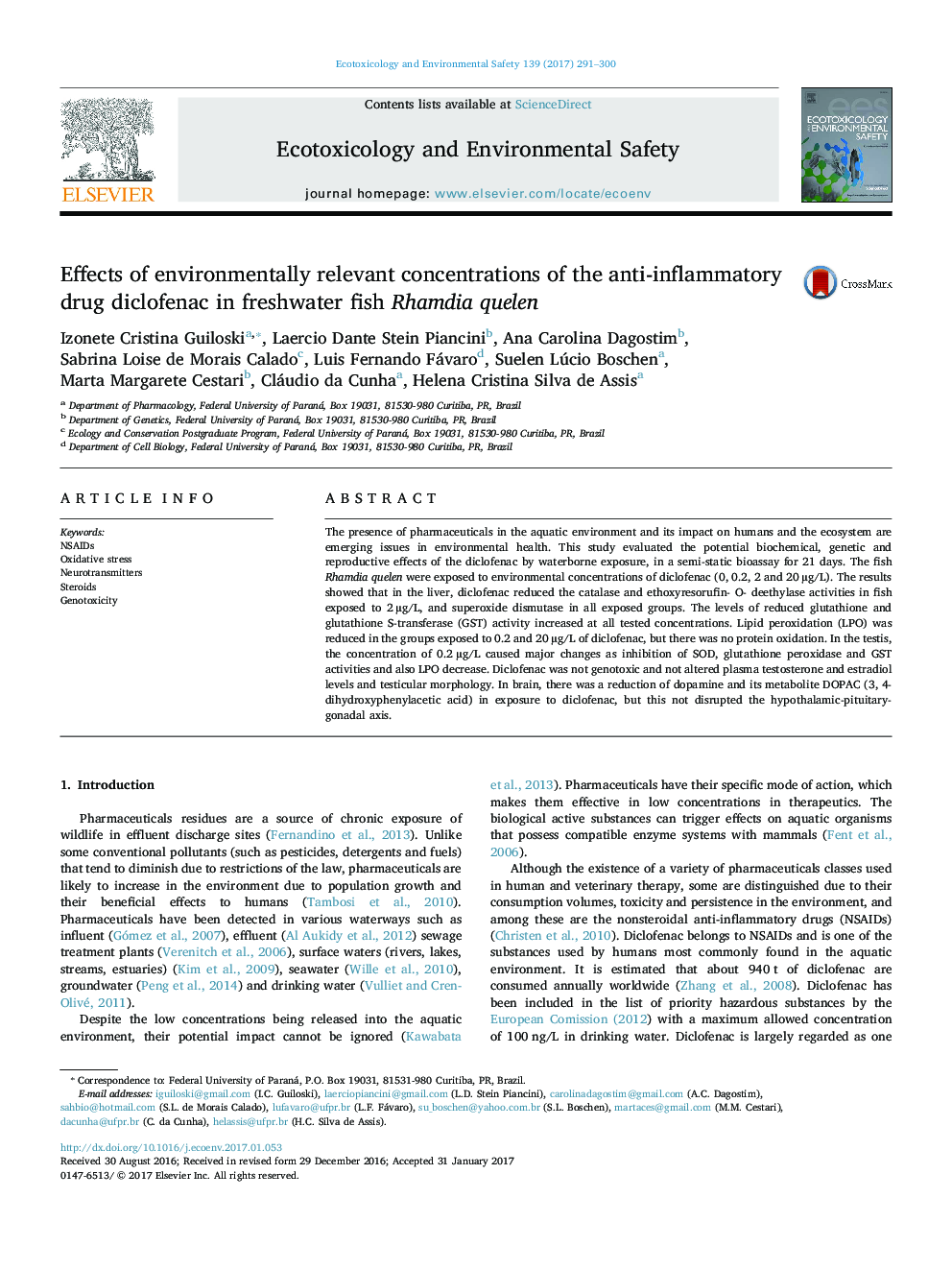| Article ID | Journal | Published Year | Pages | File Type |
|---|---|---|---|---|
| 5747994 | Ecotoxicology and Environmental Safety | 2017 | 10 Pages |
Abstract
The presence of pharmaceuticals in the aquatic environment and its impact on humans and the ecosystem are emerging issues in environmental health. This study evaluated the potential biochemical, genetic and reproductive effects of the diclofenac by waterborne exposure, in a semi-static bioassay for 21 days. The fish Rhamdia quelen were exposed to environmental concentrations of diclofenac (0, 0.2, 2 and 20 µg/L). The results showed that in the liver, diclofenac reduced the catalase and ethoxyresorufin- O- deethylase activities in fish exposed to 2 µg/L, and superoxide dismutase in all exposed groups. The levels of reduced glutathione and glutathione S-transferase (GST) activity increased at all tested concentrations. Lipid peroxidation (LPO) was reduced in the groups exposed to 0.2 and 20 µg/L of diclofenac, but there was no protein oxidation. In the testis, the concentration of 0.2 µg/L caused major changes as inhibition of SOD, glutathione peroxidase and GST activities and also LPO decrease. Diclofenac was not genotoxic and not altered plasma testosterone and estradiol levels and testicular morphology. In brain, there was a reduction of dopamine and its metabolite DOPAC (3, 4-dihydroxyphenylacetic acid) in exposure to diclofenac, but this not disrupted the hypothalamic-pituitary-gonadal axis.
Related Topics
Life Sciences
Environmental Science
Environmental Chemistry
Authors
Izonete Cristina Guiloski, Laercio Dante Stein Piancini, Ana Carolina Dagostim, Sabrina Loise de Morais Calado, Luis Fernando Fávaro, Suelen Lúcio Boschen, Marta Margarete Cestari, Cláudio da Cunha, Helena Cristina Silva de Assis,
